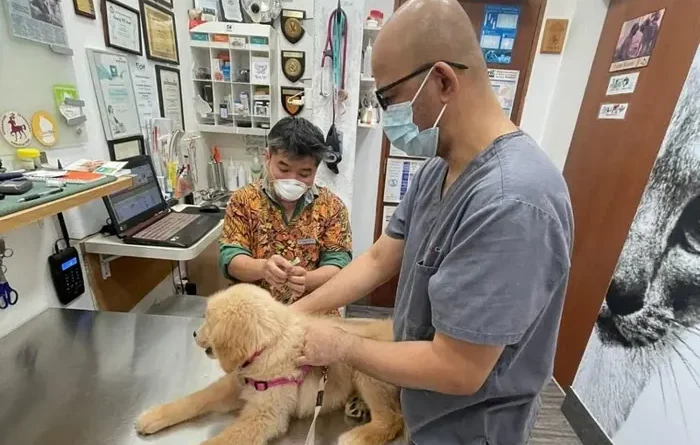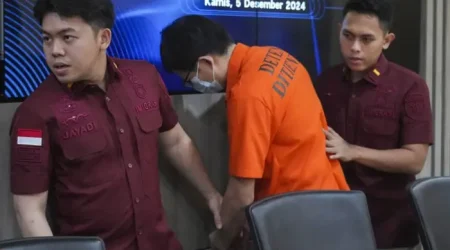Rising cost of vet medicine in Singapore: How much do you need to have a pet?
SINGAPORE: With more people treating their cats or dogs as family members and often willing to pay for the animals’ medical treatments like they would for their own, veterinary services have changed from offering mainly primary care to something resembling human healthcare today.
This means expensive diagnostic scans, surgery and cancer treatments are routinely offered, leading to one of the sector’s biggest problems: escalating costs.
Many pet owners are in a quandary about how much they can afford to pay for treatments for their beloved animals.
For example, cataract surgery for a dog today costs between S$2,700 and $4,000, while urinary stone removal is upwards of $1,000. The most expensive procedure is a hip replacement, which would most likely start from between $4,000 and $9,000.
Only a few veterinarians here have been trained as specialists in those procedures.
According to the National Parks Board (NParks), there are about 610 licensed veterinarians in Singapore as at July 2024, an increase from 590 in May. This could be due to higher demand for veterinary services over the years, it said.
Vets here are licensed and regulated by the Animal and Veterinary Service under NParks, and are required to comply with the Code of Ethics for Veterinarians, which sets out the expected professional standards of conduct.
Issues such as the cost of medication and treatment are being looked into, while the authorities continue consultations with stakeholders and determine if these issues can be addressed through a veterinary council to be set up by 2025.
Announcing this at the Singapore Vet Show in October 2023, Senior Minister of State for National Development Tan Kiat How said the council will provide better support for veterinarians, veterinary nurses and technicians.
Heart surgeon Eric Hong, who adopted a black labrador retriever puppy born with hip dysplasia, sent the dog for surgery to correct the defect when it was less than four months old. Without the surgery, the dog would be unable to walk properly or jump and may suffer crippling pain.
“Juvenile pubic symphysiodesis is a procedure undertaken early in life while the pelvis is still developing, and may substantially reduce the severity of hip dysplasia once full maturity is reached. We decided that for him as we had diagnosed him early. The surgery is far less invasive and far less costly than a total hip replacement,” Dr Hong said.
He paid about $3,000 for the surgery carried out in June 2020 and gives the dog, named Chad, physiotherapy in a special swimming pool twice a week on his own to cut down on costs.
Apart from specialised care, pet medical charges are pushed up even further with expensive tests, scans and treatments.
Dr Fred Chua, director and principal vet of Allpets and Aqualife Veterinary Clinic, who has been in small animal practice for about 35 years, acknowledged that vet fees have significantly risen “between 100 and 300 per cent, particularly in the last 20 years”.
“Having said that, the quality, spectrum and depth of vet care have also improved (tremendously),” he said. “So this is not quite a straightforward comparison. For instance, what a simple female dog neutering (spay) in the past entailed was simply that – a spay. Now it generally entails pre-op tests like liver and renal panels, having the patient on intravenous fluids and a cocktail of pain-relieving drugs.”
While these extras may not be necessary, many pet owners pay for them for the welfare of their pets.
Diagnostic scans such as X-ray, computed tomography (CT), magnetic resonance imaging, endoscopy and ultrasound scans are also more widely available and used now, vets told The Straits Times. Treatments have also become more specific and targeted, resulting in longer life expectancy for animals.
US scientists have found that the life expectancy of dogs has doubled in the past four decades, and house cats now live twice as long as their stray counterparts.
The average life expectancy of dogs in the US increased from 10.5 years to 11.8 years between 2002 and 2016.
“(Longer life expectancy) means a larger ageing pet population – older animals with more medical needs, which are more commonly treated, compared with a greater readiness to put animals down in the past,” Dr Chua said.
Dr Kenneth Tong, founder and head vet of Animal and Avian Veterinary Clinic, said: “Euthanasia, as harsh as it sounds, is an acceptable form of ‘treatment’ to relieve a pet from suffering further. It is in the interest of the animal, to relieve it from pain, rather than to prolong a deteriorating condition that cannot be treated.
“The decision is multifaceted, and much consideration is usually placed on the ultimate welfare of the animal, whether it is in the best interest for it to be euthanised or be treated palliatively or conservatively.”
Dr Chua said of euthanasia: “This (option) has become relatively uncommon in our practice today. My sense is this has been averted with crowdfunding and availability of pet adoption platforms.”
But all this increased care is expensive.
When her elderly chihuahua suddenly fell seriously ill, Tan, a housewife, rushed the dog to the emergency room of a veterinary group.
“I spent almost $13,000 just for her first 10 days’ stay at the intensive care unit, and that included several scans, including a CT scan, to find out what was wrong with her,” said the 55-year-old, who did not want to be identified as her family does not know how much she spent on her dog.
Several vets said pet healthcare costs rise between 5 per cent and 10 per cent annually on average, and in the past two years (2022 and 2023), animal clinics in Singapore increased their fees by up to 20 per cent.
In contrast, Singapore’s core inflation average was 4.2 per cent for the whole of 2023.
Dr Tong said veterinary services like consultations and procedural fees are usually on the lower end of inflation at up to 5 per cent, while external items go up more, by 5 per cent to 10 per cent.
They include prescription diets, medicine, suture materials, blood analysers and test kits, fluid pumps, anaesthetic machines, ultrasound machines “and the cost to upkeep, maintain or service them”.
“These can spike by 10 per cent a year. The costs of sought-after or high-in-demand medicines can sometimes increase by 50 per cent,” Dr Tong said.
Rental and manpower costs, the two most significant items in the vet business, have increased tremendously over the past few years.
“Expectations of younger staff to have more rest days, fewer working hours per shift compared with the past, contribute significantly to increased costs, which get passed on to clients eventually,” Dr Chua said.
Dr Angeline Yang of VetMobile, a mobile veterinary service, does not have overheads such as rentals, but as a vet who goes to homes, she charges a little more for consultation. She says she thinks it is fairer, rather than increasing the price of medication.
Home consultations mean fear-free handling, especially with nervous or frail pets that do not fare well in a clinic.
“To be honest, if I (were to) factor in the cost of education, CE (continuing education), time, materials, staff, I would have to charge more. However, we made the decision to charge in a way that is affordable for the masses,” said Dr Yang, who is also a certified vet acupuncturist.
Mergers and acquisitions of vet clinics
Recently, private equity firms have moved into the business of pets worldwide, snapping up independent vet clinics in corporate roll-ups, where multiple smaller companies are acquired and merged into a larger entity.
In Singapore, there are about 60 solo practices and more than 10 chains, including the Mount Pleasant and Animal Ark veterinary groups, offering healthcare and medical treatments for pets.
Some of them were not spared the buyouts.
US chocolate-maker Mars, for instance, has been scooping up veterinary clinics for 30 years, including in Singapore.
Under its unit that buys and operates vet clinics and hospitals worldwide, it bought the Veterinary Emergency and Specialty Hospital, the largest speciality referral and emergency hospital for animals in Singapore, in 2005.
In 2021, it acquired the Mount Pleasant Veterinary Group, which was started by pioneer Singapore vet Tan Hwa Luck in 1985. Mars also took over Hillside Veterinary Surgery in 2023.
Today, Mars Veterinary Health operates a network of about 3,000 veterinary clinics and hospitals around the world. It employs about 70,000 associates, including more than 12,000 veterinarians and roughly 22,000 para-professionals.
Professor Foo Maw Der, director of the NTU Entrepreneurship Academy, said it makes sense that private equity firms are seeing the big potential in the petcare industry.
“Pet owners are more than willing to spend on their animals’ health, so investors are expanding beyond the usual tech sectors and into industries with steady, long-term growth. Pet care fits that bill, just like human healthcare. With more money coming in, we can expect better technology and facilities,” he said.
Prof Foo, who is also the president’s chair in entrepreneurship at Nanyang Technological University, said the trade-off would likely be seeing fewer independent clinics as bigger players take over.
“As these large groups focus more on profits, the diversity and personal touch that smaller clinics can offer may diminish,” he said.
Prof Foo said smaller clinics have the advantage of offering more personalised care and niche services that larger chains might not focus on.
“Plus, the competition between the big players could help keep costs from skyrocketing. They will need to differentiate themselves with value and quality to attract clients. So while costs could increase, there is enough competition to keep it in check,” he added.
He said the good news here is that it is perhaps unlikely that there will be just one big monopoly, but probably “look more like what we see in Singapore’s healthcare system, where several large groups coexist”.
Yet the question remains: Is owning a pet increasingly something for the well-heeled?
Some pet owners say yes.
Thomas Wong and his wife spent between $15,000 and $20,000 on chemotherapy to treat the bone cancer in the hind leg of their German shepherd in 2015, wanting to “give the dog a chance because he was only five years old”.
“We ‘bought’ him another two years of life and a loving family, and we think it was worth it. If we did not have the savings to dip into, we would have had him put down,” said Mr Wong, a 72-year-old retiree.
Tan said: “You really need deep pockets to own a dog or even a cat nowadays. I do not think I would have another pet on my retirement income when my chihuahua dies.”
Other pet owners turn to holistic or raw diets and alternative treatments like traditional Chinese medicine to try to keep a lid on costs.
But Dr Yang says pet owners do not have to pull out all the stops for their animals’ medical care.
“I have seen pets that are cared for very well by lower-income households. Daily husbandry care is more important than expensive treatments. Pet guardians who do not have much financial capacity could discuss with the vets to reach a treatment plan that is best for them. Also, SPCA has a community clinic for lower-income households,” she said, referring to the Society for the Prevention of Cruelty to Animals.
SPCA runs a free clinic to help low-income households support their pets in need. To qualify for this, households have to submit documented proof that they are receiving financial aid from the Government.
Some vets offer payment options such as lines of credit and instalment plans, and may even have funds set aside to help pet owners or independent animal rescuers in a financial crisis.
“What local vets have is the ability to build strong, long-term relationships with their clients… and with a bit of support from the Government or training programmes, local vets can ease salary pressures and stay competitive without dramatically raising prices,” Prof Foo said.
Dr Tong said another option is to buy pet insurance.
There are now four companies offering pet insurance here. The first was Liberty Insurance with PetCare in 2014, and it was later joined by AON Happy Tails, underwritten by Income; CIMB My Paw Pal; and Tiq Pet Insurance by Etiqa.
Coverage includes accidental death and injury, non-surgery-related treatments, surgery, cancer treatment, third-party liability and theft.
Not every pet insurer offers protection for older pets.
Dr Tong said the priority is to protect your savings from unexpected big bills.
Agreeing that preventive medicine is still better than cure, he added that he would weigh the options together with the pet owners, and explain the rationale and realistic outcomes to prevent escalating costs.
“Preventing or avoiding a condition far outweighs the treating of it. Treating it at its earlier stage would be more economical and humane than waiting till later when it has become severe and, at times, incurable,” he said. – The Straits Times/ANN













Leave a Reply